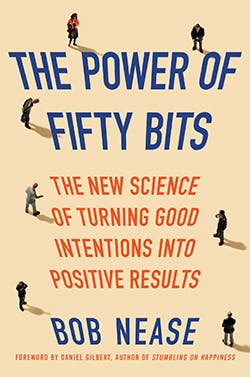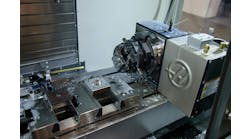In the Workplace: Old Brains, New Challenges and the Science of Better Behavior
The Power of Fifty Bits; The New Science of Turning Good Intentions Into Positive Results (HarperBusiness, 2016, $29.99)
The Author: Bob Nease, former chief scientist of Express Scripts
The Gist: Our brains can process 10 million bits of information a second. Impressive, right? Not so fast. Our conscious brains can only process about 50 bits a second. Why the disparity? Our ancient environment wired us for quick, instinctual reactions to a dangerous, unpredictable world. But 100,000 years later, we’re left with brains that are, says Nease, “stuck in the past.” We have very limited energy to put into complex, conscious decisions and so we often put them off or simply don’t bother with them. As a result, we behave in ways that may seem to contradict what is best for us. We are wired for inattention and inertia, says Nease, the roots of many of our failures to achieve the results we want.What’s Happening? Nease says we implicitly assume that behavior follows intention. If employees are getting too little exercise, it must be because they don’t want to exercise or don’t understand the value of exercise. A company might try to alter that behavior by holding educational sessions to promote more physical activity or by offering a financial incentive to those who exercise.
Ironically, as Nease writes, the problem is not one of bad intentions, or of convincing people of the value of behaving differently. Instead, we need to understand that our inattention to much of what happens around us “creates a gap between what we want to do if we were to stop and think about it and what we actually do. This represents a fundamental shift – bad behaviors stem from good intentions that lay dormant, not bad intentions that are acted upon.”
What to Do? Nease offers seven strategies designed to bridge the gap between our good intentions and our actual choices and behavior. The idea is to change the environment so that bad behavior is harder to do and good behavior is easier.
For example, one strategy is to “require choice.” This means requiring people to switch over from automatic behavior to a more conscious choice. Nease’s favorite example is Pet Smart. When you check out at this pet retailer using a credit card, a message pops up asking if you want to donate money to homeless pets. From 2007-2011, in the depths of the recession, charitable donations by Americans were down 3%. But the Pet Smart charity increased 85%.
Today's world demands deeper attention and more frequent decision making, but our brains are instead wired for inattention and inertia. These limitations lead to a persistent gap between our internal intentions and our outward actions."
—Bob Nease, The Power of Fifty Bits
“This is an example of active choice where you stop somebody in a process. You don’t change any of the incentives; you just grab their Fifty Bits long enough to let the good intentions that lay dormant see the light of day,” says Nease.
Another approach, says Nease, is to “piggyback it.” This involves attaching a desired choice or behavior to something that is already attractive. Nease offers an example from his own life. His wife was watching too much television and asked that all the televisions be removed from the house. They later brought back one TV but put it in the basement, in front of the only available “furniture” – a treadmill. To watch a show, you had to stand on the treadmill and, if you were there, you might as well turn on the machine and get some exercise.
Why it’s Important. “Behavior is mission critical for just about any organization,” Nease says. It is vital to understand that when we want people to behave a certain way and they don’t, the reason is not that they have bad intentions, he explains, nor that they aren’t smart enough to accomplish the task or aren’t buying in to the mission. Understanding that people are fighting the results of how our brains evolved, he says, frees us to try the more effective methods outlined in The Power of Fifty Bits to improve behavior.






